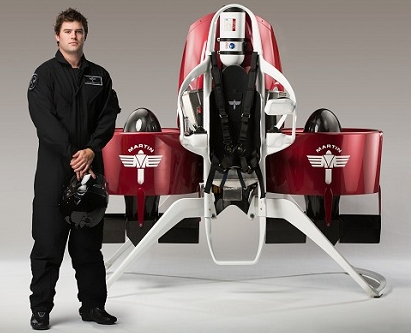'World's first practical jetpack' cleared by aviation regulators
New prototype shows a 'quantum leap' forward in performance

Your support helps us to tell the story
From reproductive rights to climate change to Big Tech, The Independent is on the ground when the story is developing. Whether it's investigating the financials of Elon Musk's pro-Trump PAC or producing our latest documentary, 'The A Word', which shines a light on the American women fighting for reproductive rights, we know how important it is to parse out the facts from the messaging.
At such a critical moment in US history, we need reporters on the ground. Your donation allows us to keep sending journalists to speak to both sides of the story.
The Independent is trusted by Americans across the entire political spectrum. And unlike many other quality news outlets, we choose not to lock Americans out of our reporting and analysis with paywalls. We believe quality journalism should be available to everyone, paid for by those who can afford it.
Your support makes all the difference.The “world’s first practical jetpack” has been cleared by aviation regulators in New Zealand to allow for manned test-flights.
Developed by the Martin Aircraft Company in Christchurch, New Zealand, the Martin Jetpack has gone through a number of prototypes with the latest, the P12, described as a “major step forward” for the design.
Previous versions of the jetpack have flown successfully up to 5000ft high, though only with dummies onboard (see below for video).
“Changing the position of the jetpack's ducts has resulted in a quantum leap in performance over the previous prototype, especially in terms of the aircraft's maneuverability," chief executive Peter Coker told AFP.
"For us it's a very important step because it moves it out of what I call a dream into something which I believe we're now in a position to commercialise and take forward very quickly.”
Despite the name, the Martin Jetpack is actually a miniaturized helicopter - jetpacks propel the wearers using jets of escaping gases, whilst the New Zealand-made device uses ducted fans to achieve flight.
With a range of 30km and a total flight time of 30 minutes, the jetpack was originally developed for recreational use, though the company behind the device say that there has also been strong interest from the commercial sector.
As well as a plaything for the ultra-rich (it’s expected to eventually go on sale for between US$150,000 and US$250,000) the jetpack could also be useful for a range of civil and defence purposes, including emergency response, surveillance and border patrol.
The jetpack has been under development for 30 years by inventor Glenn Martin. He was inspired by television shows such as ‘ Thunderbirds’ and ‘Lost in Space’ and wanted to create a jetpack that was easy to use, even for non-pilots.
Users simply strap themselves into the device and control it using a pair of joysticks. The flight system is stabilised by an onboard computer system with an auto-throttle system maintaining the desire height.
The new permit will allow the jetpack to be testing with human pilots though they won’t be able to fly higher than six metres and are limited to tests in uninhabited areas.
Despite the public’s continuing fascination with jetpacks and other personal aircraft, their development is now mostly ignored by the military and other institutions as impractical. Notable private endeavours have included the flights of 'Jetman' Yves Rossy, who made his first public flight in the US last month, flying alongside a Boeing B-17 bomber.
Join our commenting forum
Join thought-provoking conversations, follow other Independent readers and see their replies
Comments